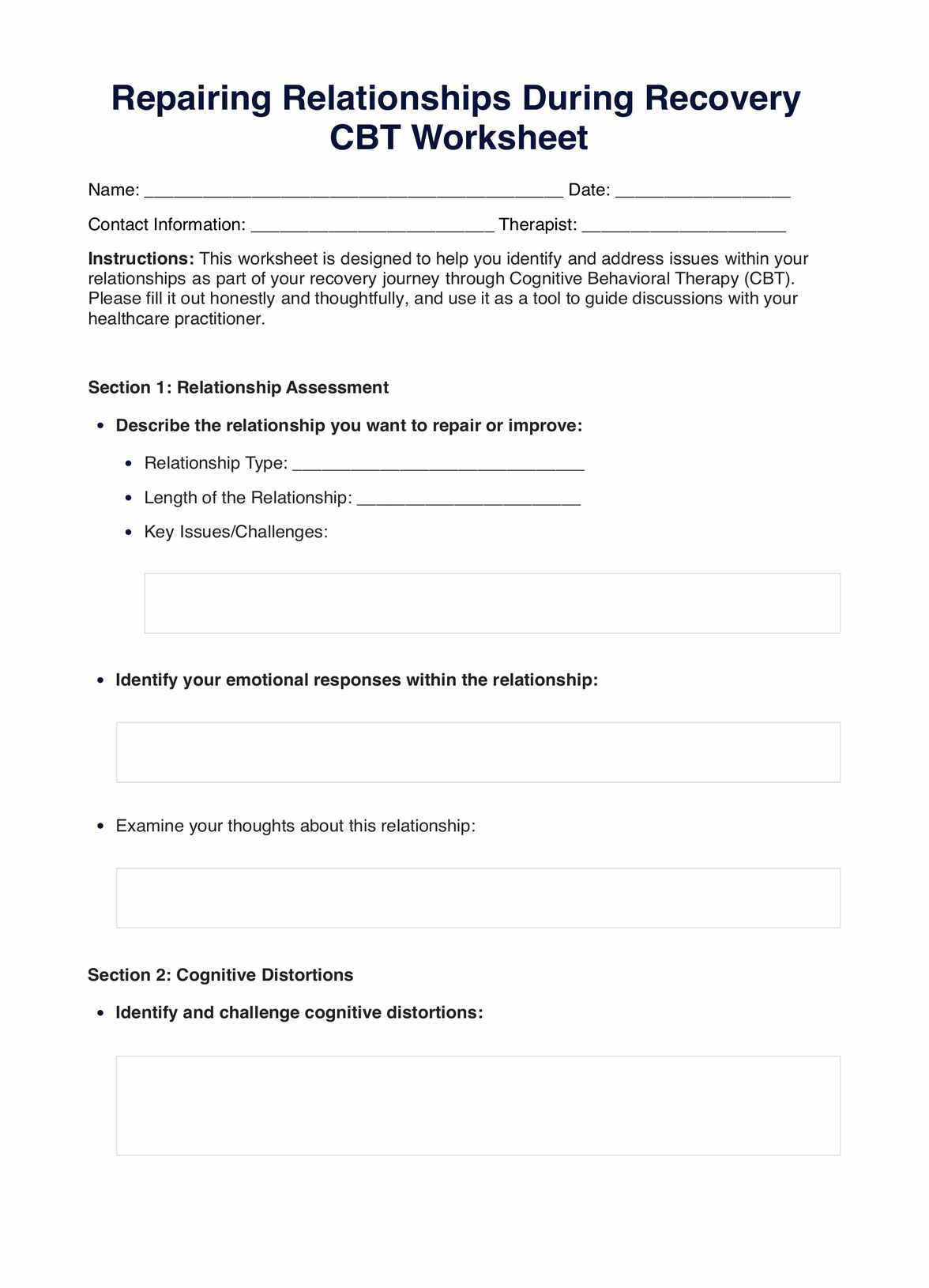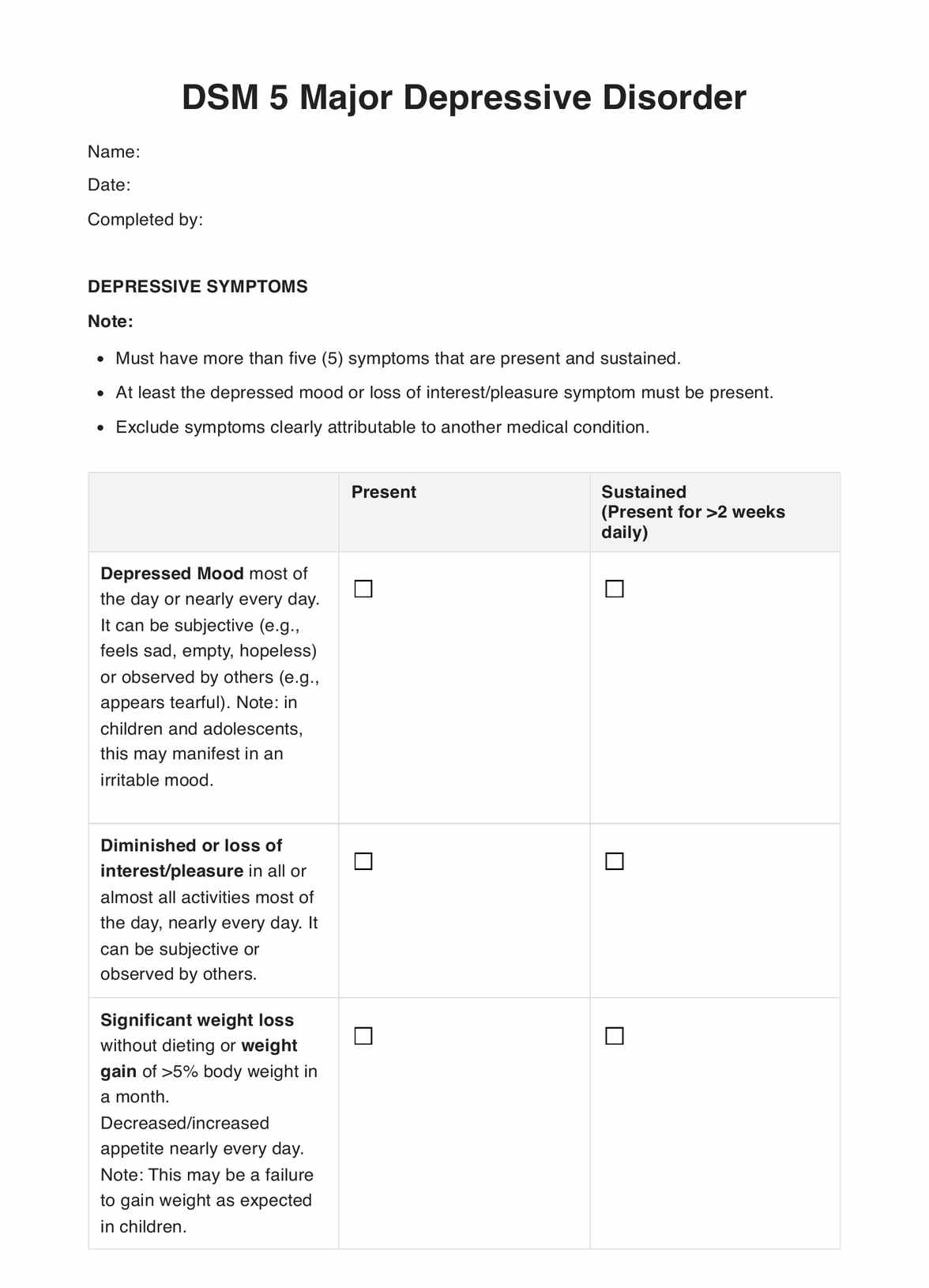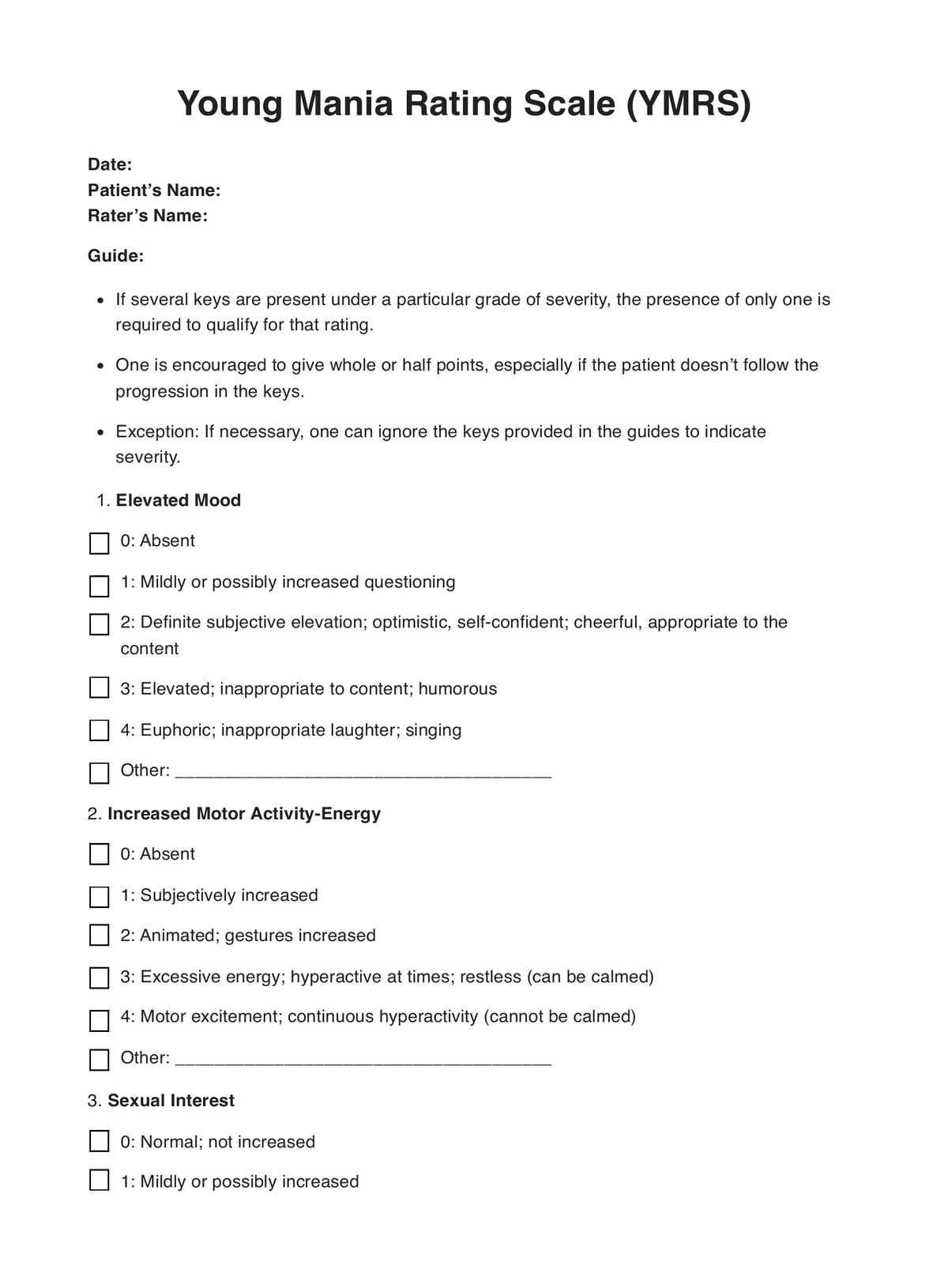Psychodynamic Treatment Plan
Discover how psychodynamic treatment plans can enhance mental health. Explore Carepatron's psychology software for efficient practice management.


What Is A Psychodynamic Treatment Plan?
A is a therapeutic approach used in psychology to help individuals identify and address the unconscious psychological processes that influence their thoughts, feelings, and behaviors. This treatment focuses on resolving underlying emotional conflicts and increasing self-awareness to improve overall psychological functioning.
Psychodynamic treatment plans typically involve an initial assessment to identify the patient's presenting problems, followed by a treatment plan that outlines the patient's goals and the specific strategies and interventions to achieve those goals. The plan may include therapeutic techniques such as free association, dream analysis, and transference/countertransference analysis.
These treatment plans often treat mental health disorders like depression, anxiety, and personality disorders. They are tailored to each individual's unique needs and concerns, ensuring they receive the most appropriate and effective treatment for their issues.
Psychodynamic Treatment Plan Template
Psychodynamic Treatment Plan Example
How To Use This Psychodynamic Treatment Plan
If you're a mental health professional using this Psychodynamic Treatment Plan to guide your treatment of a patient, here are some steps to help you effectively use the plan:
Step 1: Set Goals
The first step is to set goals that are specific, measurable, attainable, relevant, and time-bound (SMART). Use the sample goals in the Psychodynamic Treatment Plan as a guide, and work with your patient to refine these goals to meet their unique needs and preferences.
Step 2: Develop Strategies and Interventions
Next, develop strategies and interventions that align with the patient's goals. Use the sample strategies and interventions in the Psychodynamic Treatment Plan as a starting point, and tailor these to fit the patient's circumstances.
Step 3: Track Progress
Administer the outcome measures listed in the Psychodynamic Treatment Plan regularly to track the patient's progress toward their goals. Use the sample scores provided as a benchmark, but also look for individual trends in the patient's scores over time.
Step 4: Adjust Treatment as Needed
Adjust the treatment plan based on the patient's progress and feedback. This may involve modifying the strategies and interventions or adjusting the goals themselves.
Step 5: Monitor Continuously
Continuously monitor the patient's progress and adjust the treatment plan as needed throughout therapy. The Psychodynamic Treatment Plan is a living document that should be updated regularly to reflect the patient's changing needs and progress.
By following these steps, you can use this Psychodynamic Treatment Plan effectively to guide your patients' treatment. Remember always to remain flexible and open to adjusting the plan as needed to ensure the best possible outcome for your patient.
When Would You Typically Use A Treatment Plan For Psychodynamics?
Psychodynamic therapy is a type of talk therapy that emphasizes the role of the unconscious in shaping thoughts and behaviors. Mental health professionals commonly use psychodynamic treatment plans to guide treating patients with various mental health concerns. Here are some situations where a psychodynamic treatment plan might be helpful:
- Treating anxiety and depression: Psychodynamic therapy can be helpful for individuals experiencing symptoms of anxiety and depression. By exploring unconscious thoughts and feelings and building self-awareness, patients can better understand the root causes of their symptoms and develop effective coping strategies.
- Addressing relationship issues: Psychodynamic therapy can help individuals understand and address relationship patterns, including attachment and intimacy issues. Patients can improve their interpersonal skills and build healthier relationships by exploring past experiences and developing insight into unconscious habits.
- Coping with trauma: Psychodynamic therapy can be helpful in individuals who have experienced trauma. By exploring the impact of past experiences on current thoughts and behaviors, patients can develop strategies for coping with difficult emotions and building resilience.
Overall, psychodynamic treatment plans can be helpful for a wide range of mental health concerns. By developing an individualized plan based on a comprehensive assessment, mental health professionals can provide patients with effective and tailored care.
Who Can Use this Printable Psychodynamic Treatment Plan?
A structured plan can be essential for effective treatment when treating mental health concerns. A psychodynamic treatment plan can provide mental health professionals with a framework for guiding their treatment of patients with various matters, including anxiety, depression, and personality disorders. This type of plan can be used by a variety of mental health professionals, including:
- Psychiatrists: Medical doctors specialize in diagnosing and treating mental illness. They can use psychodynamic treatment plans to guide their treatment of patients with various mental health concerns.
- Psychologists: Psychologists are trained mental health professionals who use a variety of therapeutic approaches to treat patients. Psychodynamic treatment plans can be valuable for psychologists specializing in psychodynamic therapy.
- Clinical social workers: Clinical social workers are trained to provide mental health services to individuals, families, and communities. They can use psychodynamic treatment plans to guide their treatment of patients with various mental health concerns.
- Mental health counselors: Mental health counselors are trained to provide therapy to individuals with mental health concerns. They can use psychodynamic treatment plans to guide their treatment of patients with various mental health concerns.
Any mental health professional trained in psychodynamic therapy can use a printable psychodynamic treatment plan to guide the treatment of patients. By using a structured and individualized plan, mental health professionals can provide patients with effective and tailored care.
Why Is This Assessment Popular With Psychologists?
Psychologists play an essential role in the treatment of mental health concerns. They are trained to assess, diagnose, and treat various psychological disorders and conditions. To do so effectively, psychologists may use multiple assessment tools and treatment approaches, and psychodynamic treatment plans are popular for several reasons, including:
- Emphasis on the therapeutic relationship: Psychodynamic therapy strongly focuses on the therapeutic relationship between the therapist and the patient. Psychologists who use this approach value building trust, empathy, and mutual respect with their patients, which can lead to more effective treatment outcomes.
- Focus on unconscious processes: Psychodynamic therapy also explores how they contribute to a patient's emotional and behavioral difficulties. Psychologists who use this approach value discussing and understanding the unconscious mind and how it impacts a patient's thoughts, feelings, and behaviors.
- Tailored treatment plans: Psychodynamic treatment plans are individualized to each patient, taking into account their unique experiences, personality, and goals for therapy. Psychologists who use this approach appreciate the importance of developing a treatment plan tailored to the patient's needs and concerns.
Psychologists appreciate the depth and individualized approach of psychodynamic therapy and how it can help patients gain insight and understanding into their emotions and behavior. Psychologists can use a psychodynamic treatment plan to guide their treatment in a structured, goal-oriented way tailored to the patient's needs.

Benefits of a Free Psychodynamic Treatment Plan
Cost-effective
Creating a treatment plan from scratch can be costly, especially if you outsource it to a professional. However, the free treatment plan template is readily available and can save money.
Consistency
Using a pre-made template ensures consistency in treatment planning, making monitoring progress and evaluating outcomes easier.
Time-saving
The pre-made template allows you to focus more on the therapeutic relationship with the client and less on the paperwork, thus saving you valuable time.
Professionalism
Using a pre-made template creates a more professional look to your treatment plan, making communicating and coordinating care with other healthcare professionals easier.
Flexibility
The template allows for customization and tailoring to fit individual client needs, thus ensuring the best possible outcomes for your clients.
Commonly asked questions
A psychodynamic treatment plan is used when an individual experiences symptoms of mental health conditions that stem from unresolved emotional conflicts. It benefits those with anxiety, depression, personality disorders, and other mental health conditions.
To write a psychodynamic treatment plan, the clinician first assesses the patient's symptoms and conducts a thorough evaluation to identify underlying emotional conflicts. The clinician then develops goals and strategies to address these conflicts, including free association, dream analysis, and emotional processing.
Psychodynamic treatment plans are helpful because they allow clinicians to address the root causes of mental health conditions. The patient can better understand their emotions and develop healthy coping mechanisms by exploring unconscious thoughts and feelings. This therapy encourages positive self-talk, challenges negative beliefs, and helps patients build self-compassion. The use of outcome measures can track progress and modify treatment plans accordingly.

.webp)
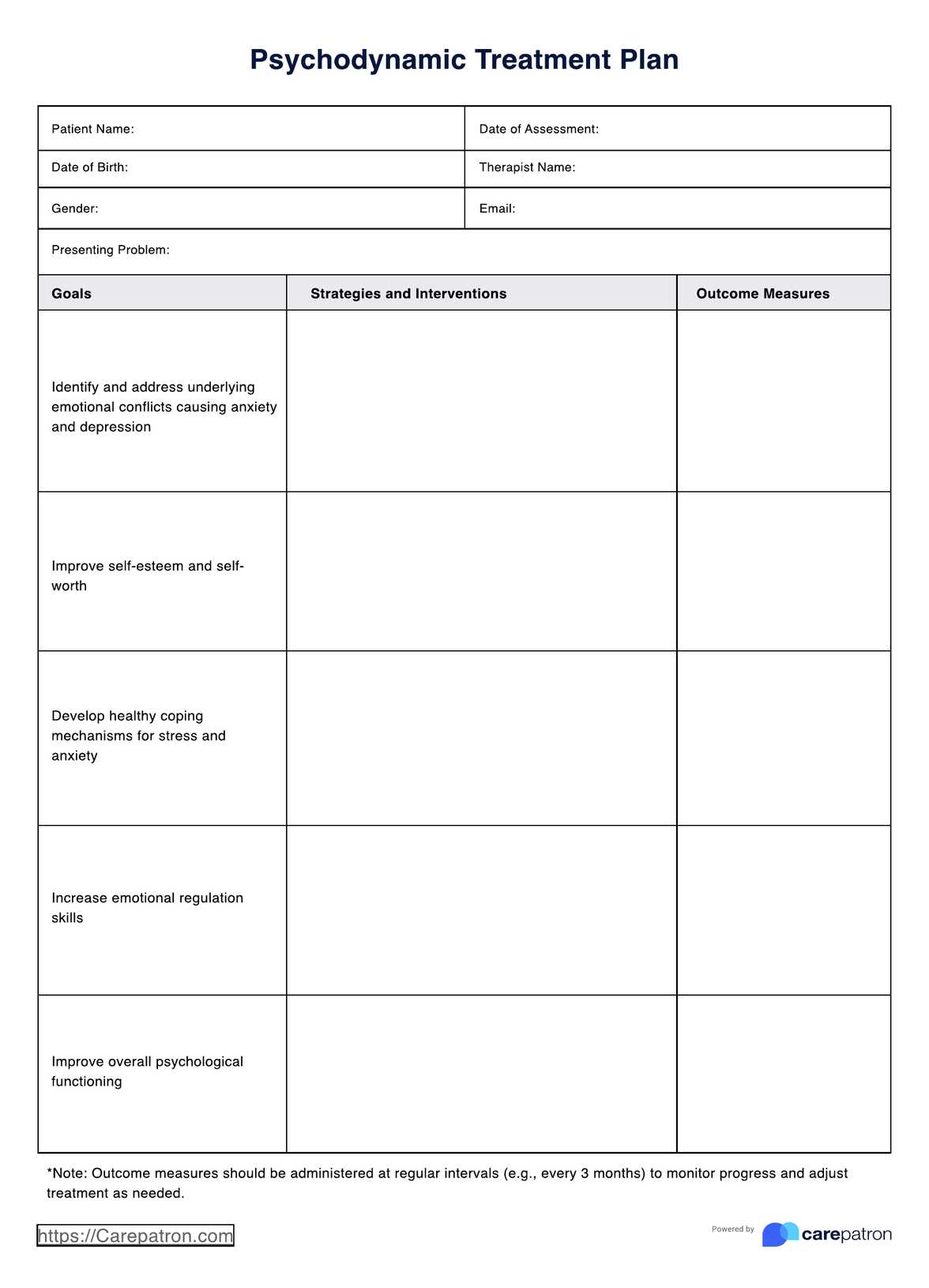
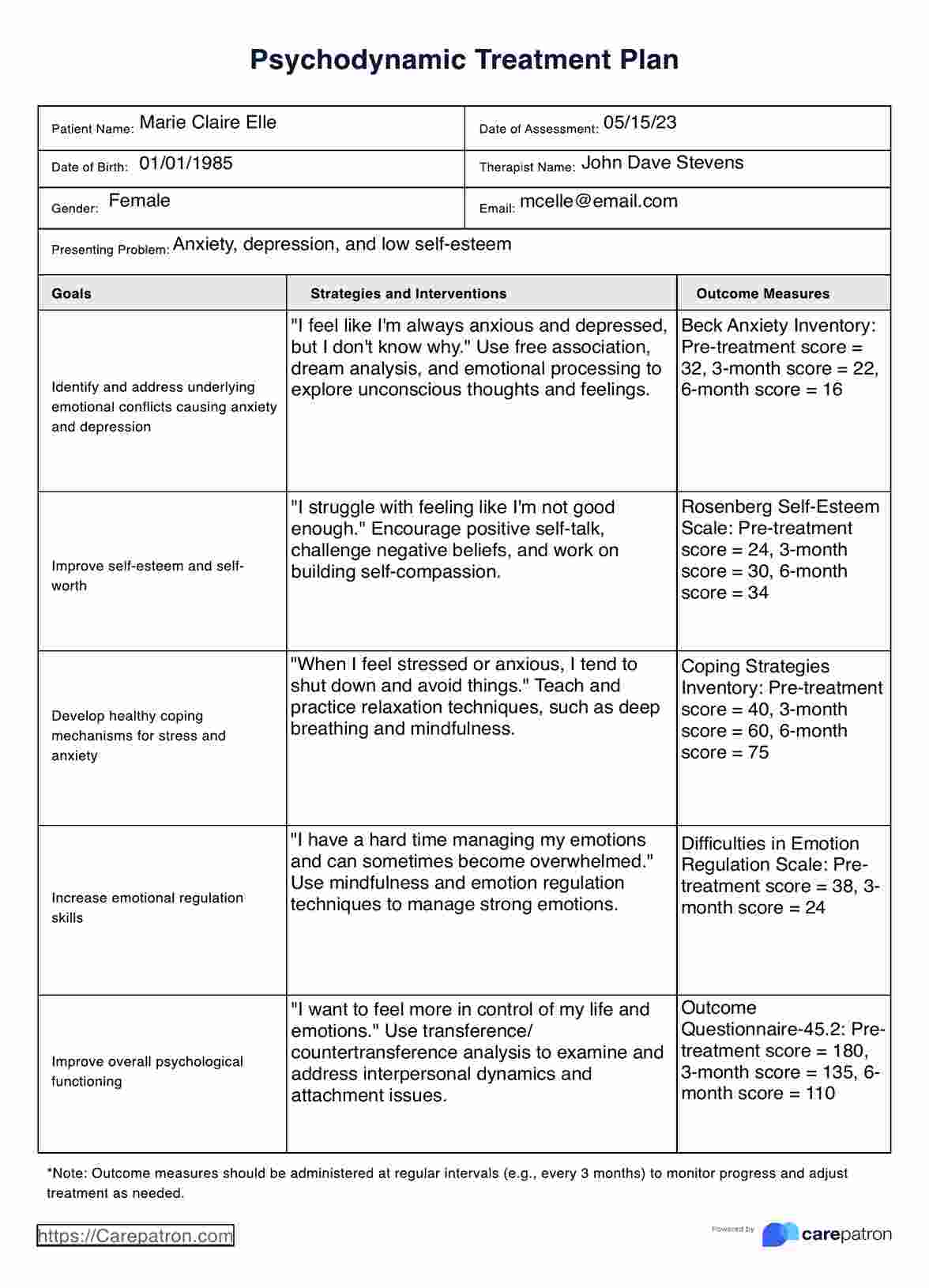















-template.jpg)



























































































